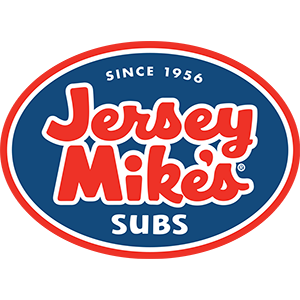Commercial Refrigeration Basics
When picking out your commercial refrigeration equipment, you need to have an idea about how much food you are going to need space for and how much food you are going to keep in your commercial refrigeration system at all times. Commercial refrigeration units come in a wide variety of storage capacities, and if you purchase a unit that is too big you will end up wasting money by keeping a larger space cold than you need. With your operating margins probably very thin, it is important to buy a commercial refrigeration unit that is just big enough. If the unit you purchase is too small, then you’ll just have to buy another commercial refrigeration unit to store all of your perishable food items.
Commercial Refrigeration Walk-ins
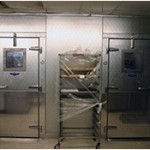 A walk-in commercial refrigeration unit is just what its name implies: a refrigerator big enough to walk into. It can be as small as a closet or as large as a good-size room, but its primary purpose is to provide refrigerated storage for large quantities of food in a central area. Experts recommend that your operation needs a commercial refrigeration walk-in when its cold storage needs exceed 80 cubic feet, or if you serve more than 250 meals per day. Once again, you’ll need to determine how much you need to store, what sizes of containers the commercial refrigeration storage space must accommodate, and the maximum quantity of goods you’ll want to have on hand at any time.
A walk-in commercial refrigeration unit is just what its name implies: a refrigerator big enough to walk into. It can be as small as a closet or as large as a good-size room, but its primary purpose is to provide refrigerated storage for large quantities of food in a central area. Experts recommend that your operation needs a commercial refrigeration walk-in when its cold storage needs exceed 80 cubic feet, or if you serve more than 250 meals per day. Once again, you’ll need to determine how much you need to store, what sizes of containers the commercial refrigeration storage space must accommodate, and the maximum quantity of goods you’ll want to have on hand at any time.
The most economical way to use a commercial refrigeration walk-in is to equip it with shelves, organized in sections. Exactly how much cold storage area do you need? The easiest formula is to calculate 1 to 1.5 cubic feet of commercial refrigeration walk-in storage for every meal you serve per day. To determine the cubic feet of storage area determine how much liner footage you have of shelf space (measure along the front), multiply this by the number of shelves and the depth of the shelves, then measure how much vertical space there is between each shelf. When you multiply all these numbers together you’ll have the cubic feet of commercial refrigeration storage available in your walk-in.
How Many Commercial Refrigeration Units Do You Need?
 For some food service operations you might also need more than one commercial refrigeration unit if you need to store perishable items at various temperatures. For instance, you’ll need one for produce (41 degrees Fahrenheit), one for meats and fish (33 to 38 degrees Fahrenheit), and one for dairy products (32 to 41 degrees Fahrenheit). If this is your situation, then determining the commercial refrigeration storage you need is a bit more complex, but nothing that can’t be determined with a little planning.
For some food service operations you might also need more than one commercial refrigeration unit if you need to store perishable items at various temperatures. For instance, you’ll need one for produce (41 degrees Fahrenheit), one for meats and fish (33 to 38 degrees Fahrenheit), and one for dairy products (32 to 41 degrees Fahrenheit). If this is your situation, then determining the commercial refrigeration storage you need is a bit more complex, but nothing that can’t be determined with a little planning.
Modern commercial refrigeration walk-ins sometimes offer a frozen-food section in addition to the regular cooler space. There are pros and cons to this concept. It may ease the load on the freezer, because it’s already located inside a chilled airspace; but it also can’t help but reduce overall usable space, because it requires a separate door. You can also order your walk-in with a separate, reach-in section that has its own door and shelves. Although this may save the cost of purchasing a separate reach-in, some critics claim that a walk-in is not designed to do a reach-in job, such as storing uncovered desserts. Do you really want them in the same environment as cartons of lettuce and other bulk storage items? There may be cleanliness or food quality factors to consider.
Smart Features of Commercial Refrigeration
Other smart features to consider besides the size of your commercial refrigeration walk-include the following: a thermometer, a monitoring and recording system that keeps a printout of refrigeration temperature or downloads to a computer, and heavy-duty plastic strip curtains inside the door. By using technology to monitor and control your commercial refrigeration unit, you’ll end up saving money in the long run because you won’t be constantly manually adjusting the commercial refrigeration equipment.

 Door hinges for your commercial refrigeration walk-in can be rubbed with petroleum jelly to make sure they continue to work well. If these develop a build-up of grease or grime, then their operation will not remain smooth. This means they will begin to stick resulting in your doors not closing automatically and the cold air escaping. Again this will result in lower efficiency for your commercial refrigeration walk-in and higher energy costs.
Door hinges for your commercial refrigeration walk-in can be rubbed with petroleum jelly to make sure they continue to work well. If these develop a build-up of grease or grime, then their operation will not remain smooth. This means they will begin to stick resulting in your doors not closing automatically and the cold air escaping. Again this will result in lower efficiency for your commercial refrigeration walk-in and higher energy costs.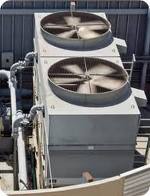 During your next scheduled industrial air conditioning service, you might want to consider requesting an energy audit as well. While you may spend money on commercial HVAC services on a regular basis to ensure your commercial HVAC system is operating properly and not burning energy inefficiently it is important to also know how well your building is holding the heat that your commercial HVAC system is producing. If your building is not holding the hot or cold air your commercial HVAC system is producing, then you’re throwing away money through the leaks. If the service technician tells you your HVAC system seems to be doing well each time you have an industrial air conditioning service inspection but your energy bills seem too high, then energy leaks might be the main culprit.
During your next scheduled industrial air conditioning service, you might want to consider requesting an energy audit as well. While you may spend money on commercial HVAC services on a regular basis to ensure your commercial HVAC system is operating properly and not burning energy inefficiently it is important to also know how well your building is holding the heat that your commercial HVAC system is producing. If your building is not holding the hot or cold air your commercial HVAC system is producing, then you’re throwing away money through the leaks. If the service technician tells you your HVAC system seems to be doing well each time you have an industrial air conditioning service inspection but your energy bills seem too high, then energy leaks might be the main culprit.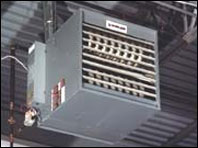 Infrared cameras and infrared thermographs can also be used to detect energy leaks. These will show the temperature differences in various areas of a building. By pointing out where the hot and cold spots are, you can then determine where your energy from your commercial HVAC system is leaking. Again, the auditor should use these tools before and after the building is weatherized to ensure that the leakage problems have been fixed.
Infrared cameras and infrared thermographs can also be used to detect energy leaks. These will show the temperature differences in various areas of a building. By pointing out where the hot and cold spots are, you can then determine where your energy from your commercial HVAC system is leaking. Again, the auditor should use these tools before and after the building is weatherized to ensure that the leakage problems have been fixed.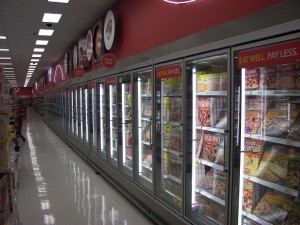 Counter top display units are great for getting customers to make impulse purchases. They are most effective when placed at checkouts and pay points. So when people are lining up to pay, they are enticed to make a last minute purchase by the food items on display in the commercial display refrigerator or freezer. This is a proven fact and is a method employed by all major food retailers. By placing a counter top display refrigerator or freezer in this location, you are improving the chances of a sale being made. By placing high impulse goods such as ice cream and other treats inside the display unit, you are even further increasing the likelihood of a sale being made.
Counter top display units are great for getting customers to make impulse purchases. They are most effective when placed at checkouts and pay points. So when people are lining up to pay, they are enticed to make a last minute purchase by the food items on display in the commercial display refrigerator or freezer. This is a proven fact and is a method employed by all major food retailers. By placing a counter top display refrigerator or freezer in this location, you are improving the chances of a sale being made. By placing high impulse goods such as ice cream and other treats inside the display unit, you are even further increasing the likelihood of a sale being made.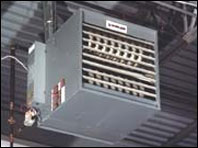 The word HVAC stands for heating, ventilation, and air conditioning. An industrial HVAC system for a building can have different combinations of heating and cooling devices. These systems can include a boiler, furnace, heat pump, rooftop unit, or electric heat. Common industrial cooling systems include rooftop units, heat pumps, chillers, and basic air conditioning units.
The word HVAC stands for heating, ventilation, and air conditioning. An industrial HVAC system for a building can have different combinations of heating and cooling devices. These systems can include a boiler, furnace, heat pump, rooftop unit, or electric heat. Common industrial cooling systems include rooftop units, heat pumps, chillers, and basic air conditioning units.



